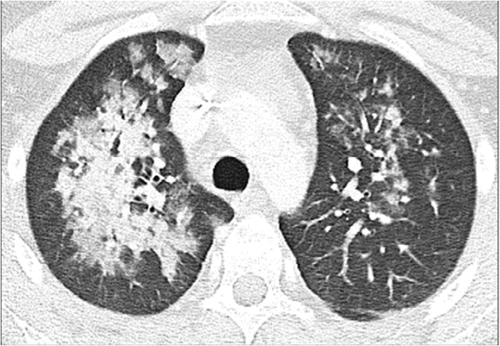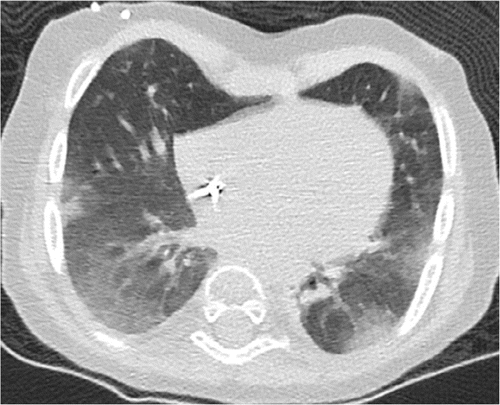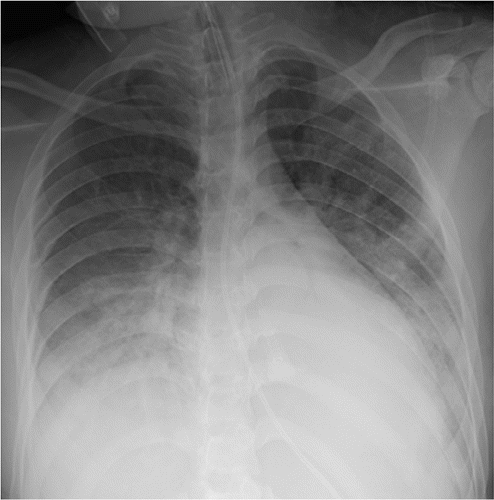Chest Imaging Guidance for Pediatric COVID-19 Patients: International Consensus
International expert group offers recommendations for proper imaging of younger infected patients.



As the COVID-19 virus continues to spread globally, more reports are starting to surface of children begin infected. To date, however, there’s been little guidance about the role imaging plays with these younger patients.
On Thursday, a group of six pediatric thoracic radiologists from six countries – the United States, Spain, Hong Kong, Brazil, South Africa, and United Emirates – published an international consensus statement in Radiology: Cardiothoracic Imaging that offered guidance on imaging findings, structured reporting, and study recommendations.
“There is a great deal of uncertainty surrounding the diagnosis and management of COVID-19 pneumonia in pediatric patients,” wrote the international team, led by Edward Y. Lee, M.D., MPH, from the department of pediatric radiology at Red Cross War Memorial Children’s Hospital in Cape Town, South Africa. “Practice patterns will vary across institutions and, thus, this statement is meant to offer guidance, however, best results will likely be achieved through candid discussions between individual radiology groups and their respective referring providers.”
Overall, they suggested, when you’re considering whether to image a pediatric patient suspected of COVID-19 infection, you should consider the sensitivity and specificity of imaging studies, the availability and accuracy of real-time polymerase chain reaction (RT-PCR) tests, and potential radiation dose.
To help you decide when and how to use chest X-ray and chest CT, they offered the following recommendations.
Chest X-ray
Although chest X-ray has been found to be less sensitive than chest CT in identifying findings characteristics of COVID-19 in adults – 33.3 percent compared to 88.9 percent – it’s a good option to consider in certain situations with pediatric patients, the team wrote.
“[Chest X-ray] is perhaps even more essential in this patient population due to increased radiation sensitivity of children and hesitancy to pursue cross-sectional imaging, such as CT,” the team wrote, “thus, continued investigation and reporting of observed pediatric [chest X-ray] abnormalities in COVID-19 is imperative.”
Recommendations: In general, the American College of Radiology recommends against imaging for any “well appearing immunocompotent child” over three months of age who isn’t hospitalized. But, if a child doesn’t respond to outpatient treatment, is hospitalized, or might have hospital-acquired pneumonia, you should consider chest X-ray. Serial chest X-rays can be beneficial in assessing treatment response or disease progression.
Structured Reporting: When creating your structured report for chest X-rays, place your findings in four categories.
Typical: This category refers to the characteristic COVID-19 pneumonia imaging pattern, including bilateral peripheral and/or subpleural ground-glass opacities and/or consolidation.
Language used should reflect that the imaging pattern is commonly seen in children with COVID-19 pneumonia. Remember that viral or atypical pneumonia could also be differential considerations, the team advised.
Intermediate: This category includes imaging findings that are observed with – but less specific for – COVID-19 pneumonia, such as unilateral non-segmental/lobar ground-glass, consolidative opacities, multifocal ground-glass/consolidative opacities without any particular distribution.
This group also includes features more typically associated with viral pneumonia and reactive small airways disease, including peribronchial thickening and/or opacities.
Atypical: This category is devoted to chest X-ray findings that aren’t often seen with COVID-19 pneumonia and might indicate a different diagnosis, including unilateral segmental or lobar consolidation indicative of bacterial pneumonia, central distribution of parenchymal opacities, single round consolidation, pleural effusion, and lymphadenopathy.
Negative: Use this category to describe chest X-rays with no evidence of pneumonia.
Chest CT
According to existing literature, chest CT findings in pediatric patients are milder, and the most common ones are bilateral peripheral and/or subpleural ground-glass and/or consolidative opacities often in the lower lobes of the lungs.
Based on clinical experience, the team wrote, 50 percent of pediatric patients exhibit the “halo” sign, a focal consolidation with a rim of surrounding ground-glass opacity. The evolution of the “halo” can be used to determine disease phase, they added. Initially, the sign indicates early-phase disease. It becomes ground-glass in the progressive phase and consolidative opacities in the developed phase.
Pediatric patients also exhibit more peribronchial thickening and inflammation along the bronchovascular bundle, and fine mesh reticulation and “crazy paving” has also be reported. You’re less likely to see pleural effusion and lymphadenopathy.
Recommendations: Whenever possible, you should still use RT-PCR as an initial tool for diagnosis, the team asserted. However, you can consider chest CT if you need to answer a specific clinical question in the acute setting or if a patient known to be COVID-19-positive is getting worse. Follow-up chest CT can also helpful in assessing the development or progression of fibrotic lung disease post-acute infection.
Structured Reporting: Use the same four categories for chest CT that you did for chest X-ray.
Typical: Here, you’ll find bilateral, peripheral and/or subpleural ground-glass opacities and/or consolidation in the lower lobe predominant pattern, and “halo” sign in the early phase.
Intermediate: In this category, you’ll find unilateral peripheral or peripheral and central ground-glass opacities and/or consolidation, bilateral peribronchial thickening and/or peribronchial opacities, multifocal or diffuse ground-glass opacities and/or consolidation without specific distribution, and “crazy paving” sign.
Atypical: Within this group, you should include unilateral segmental or lobar consolidation, central unilateral or bilateral ground-glass opacities and/or consolidation, discrete small nodules, lung cavitation, pleural effusion, and lymphadenopathy.
Negative: No findings suggestive of pneumonia.
Clinical Situations
To better instruct you on how best to use imaging with pediatric patients positive or suspected positive for COVID-19, the team outlines three clinical situations – a mild case, a moderate-to-severe case in a resource-full environment, and a moderate-to-severe cases in a resource-constrained environment.
Mild Case: For children with mild symptoms, such as fever, cough, and a runny nose, use RT-PCR as a first screening tool. Unless a child suspected of infection also has underlying co-morbidities, imaging isn’t indicated. In those cases, chest imaging can provide a baseline exam for potential future comparisons. Chest CT can be employed if a child fails to improve, experiences disease progression, or might have an alternative diagnosis.
Moderate-to-Severe, Resource-Full: RT-PCR is the recommended first test for children with more serious symptoms, including moderate-to-severe dyspnea or hypoxemia, chest pain, tachyardia, low blood pressure, or altered mental state. Chest X-ray is recommended for an initial evaluation and baseline, and chest CT can be considered if the outcome might influence clinical decision-making, the team explained.
Moderate-to-Severe, Resource-Constrained: In environments where RT-PCR tests are either scarce or testing turn-around time is slow, imaging can be a good first step to evaluate findings that could suggest COVID-19 infection, the team wrote. Chest CT is the better option because it is more sensitive than a chest X-ray.
And, regardless of the environment, the team advised, a chest X-ray is appropriate in pediatric patients to monitor their response to treatment, assess any worsening of condition, or to evaluate the position of any life-support devices. A chest CT can also be used if a child fails to improve or if he or she gets worse – but, since it exposes a child to more radiation, only use it if it will have a direct impact on your clinical decision-making.
Follow-Up
After recovery, long-term imaging isn’t recommended for asymptomatic children who had mild disease. Consider chest X-ray for symptomatic patients who had mild disease.
Among symptomatic patients who had moderate-to-severe disease, a two-view chest X-ray is recommended. The same imaging can also be considered for asymptomatic patients who might have long-term lung injury, the team explained.
GE HealthCare Debuts AI-Powered Cardiac CT Device at ACC Conference
April 1st 2025Featuring enhanced low-dose image quality with motion-free images, the Revolution Vibe CT system reportedly facilitates improved diagnostic clarity for patients with conditions ranging from in-stent restenosis to atrial fibrillation.